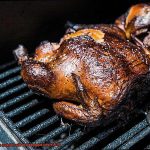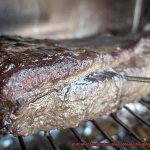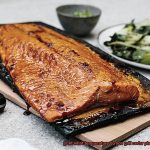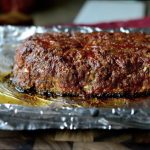Thanksgiving is just around the corner, and it’s time to start planning that perfect turkey. Sure, you want it juicy, tender, and bursting with flavor – but have you thought about the smoke? Smoking your turkey on a grill or smoker can add an irresistible depth of flavor. But when is it safe to stop smoking your bird?
That’s where we come in. Cooking a turkey can be intimidating, but don’t worry – we’ve got your back. In this blog post, we’ll explore the science behind smoking meat and why it’s so darn tasty. We’ll also reveal the temperature at which you should stop smoking your turkey for maximum flavor without overdoing it.
So whether you’re a seasoned pro or a first-time turkey cooker, grab a cup of coffee and join us on this delicious journey. We promise to make your Thanksgiving feast one for the books.

Contents
The Importance of Temperature for Smoking a Turkey
Among all the factors that contribute to a perfectly smoked turkey, temperature control is the most crucial. The temperature range for smoking a turkey should be between 225°F and 275°F to guarantee that the bird is fully cooked and has an excellent smoky flavor.
Maintaining optimal temperature control during smoking is essential to achieve a mouth-watering result. If the temperature is too high, the turkey can lose its moisture and become dry and tough. Conversely, if the temperature is too low, the turkey can become unsafe to eat and may not have enough smoky flavor. Therefore, it’s important to monitor the temperature throughout the entire cooking process using a thermometer.
Using a digital smoker is an excellent way to achieve precise temperature control during smoking. Digital smokers have built-in thermometers that allow you to monitor the temperature accurately. They also make it easier to maintain consistent heat throughout the cooking process, leading to more uniform results.
But temperature control isn’t all about using a digital smoker – choosing high-quality wood also plays an essential role in determining the level of smoky flavor of your turkey. Different woods provide different levels of smoky flavor, ranging from mild to strong. Hickory, applewood, cherry, and mesquite are some popular woods used for smoking turkey. Experimenting with different types of wood can help you discover your preferred level of smokiness.
At What Temperature Does Turkey Stop Smoking?
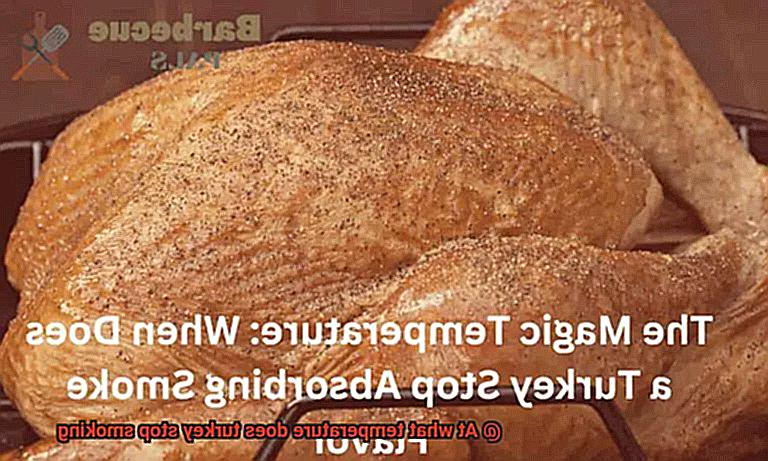
Smoking a turkey is an art, and mastering this cooking technique requires a certain level of finesse. One important question you may be asking yourself is at what temperature does turkey stop smoking? The answer to this question is not as simple as you might think. Several factors come into play, including the size of the turkey, the type of smoker being used, and your desired level of smokiness.
To achieve a perfectly smoked turkey, most experts recommend cooking it at a low and steady temperature between 225-250°F. This temperature range allows for a slow and consistent cooking process that infuses the turkey with smoky flavor without drying it out. However, patience is key because smoking a turkey can take several hours.
When it comes to determining when your turkey has stopped smoking, it’s not about temperature but rather the length of time that the bird is exposed to smoke. Most recipes suggest smoking your turkey for 4-6 hours or until the internal temperature reaches 165°F in the thickest part of the bird. At this point, your turkey should be fully cooked through and no longer need to be exposed to smoke.
Keep in mind that some smokers come equipped with a built-in timer or thermometer that can help you monitor the internal temperature of your turkey. These tools can be useful in ensuring that your turkey is cooked safely and thoroughly without overcooking or undercooking it.
The USDA Guidelines for Fully Cooked Turkey
When it comes to cooking turkey, safety should always be a top priority. That’s why the United States Department of Agriculture (USDA) has set guidelines for fully cooked turkey to ensure that you and your loved ones can enjoy a delicious meal without any risk of illness.
One of the most important things to note is that the internal temperature of cooked turkey should reach 165°F (74°C) in the thickest part of the bird – including the thigh and wing, not just the breast. This temperature measurement is crucial to prevent harmful bacteria like Salmonella and Campylobacter from causing foodborne illness.
But what about smoking your turkey? While smoking can add a mouthwatering smoky flavor, it’s important to note that it doesn’t guarantee your turkey has reached the recommended internal temperature of 165°F. To ensure that your smoked turkey is safe to eat, you should always use a meat thermometer to measure the internal temperature before serving.
To summarize, following the USDA guidelines for fully cooked turkey is vital for both taste and safety. Here are some key takeaways to keep in mind:
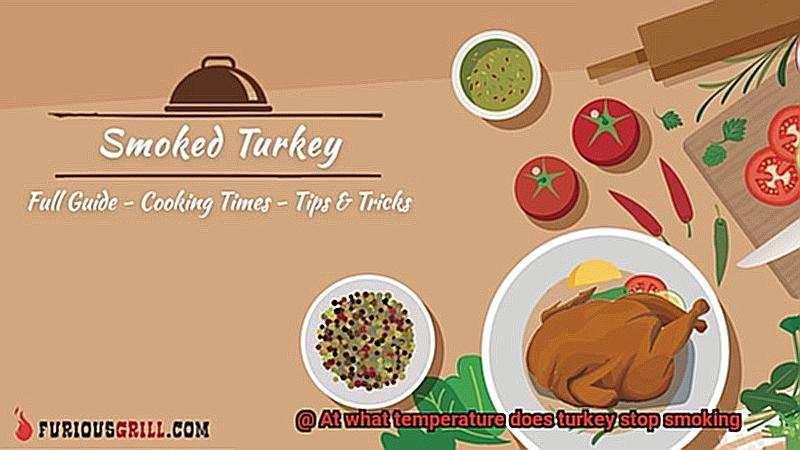
- Cook your turkey to an internal temperature of 165°F in the thickest part of the bird.
- Use a meat thermometer to ensure that your smoked turkey has reached the correct internal temperature.
- Be mindful of harmful bacteria like Salmonella and Campylobacter that can cause foodborne illness if not properly cooked.
Keeping the Temperature Slightly Higher for Juicier and Tender Bird
If so, it’s time to adopt a new cooking technique that will elevate your bird to new heights of succulence and tenderness. One such method, recommended by experts, is to keep the temperature slightly higher than usual. But how does this approach lead to a juicier result? Let’s take a closer look at the science behind it.
Before we delve into the benefits of a higher temperature, let’s establish the ideal range for cooking turkey. Typically, a range of 325°F to 350°F will ensure that the internal temperature reaches 165°F, which is the safe minimum recommended by the USDA to prevent foodborne illness. However, some experts suggest increasing the temperature to 375°F for a juicier and more tender outcome.
So why does a higher temperature translate to a juicier bird? The answer lies in cooking time. When you cook your turkey at a higher temperature, it reduces the overall cooking time. This means that there’s less time for the juices to evaporate from the meat, resulting in a more succulent bird. Additionally, a higher temperature can help to brown and crisp up the skin, which many people consider to be one of the best parts of the turkey.
But here’s the caveat: you don’t want to overcook your turkey in pursuit of juicy meat. Overcooking can result in dry, tough meat that no amount of juiciness can make up for. That’s why it’s crucial to use a meat thermometer to ensure that your bird is cooked thoroughly but not overdone. The internal temperature of the thickest part of the turkey should reach 165°F before it’s safe to eat.
Now that we’ve established why a higher temperature is beneficial and how to avoid overcooking, let’s take a moment to appreciate some of the other perks of this technique. For one, a higher temperature can help to create a crispy and golden brown skin that is both visually appealing and delicious. Additionally, by reducing the overall cooking time, you’ll have more control over the texture and flavor of the meat, allowing you to achieve the perfect balance of tenderness and succulence.
Factors That Affect Cooking Times and Temperatures
Cooking times and temperatures are key factors that can make or break your turkey. Don’t let these factors intimidate you, though. Let’s dive into the most important elements that can affect your cooking process.
The size of your turkey is crucial in determining cooking times and temperatures. A larger bird will obviously require more time to cook than a smaller one. As a general rule of thumb, estimate around 15 minutes of cooking time per pound of turkey. So, if you’re cooking a 12-pound turkey, it should take approximately 3 hours to cook thoroughly.
The type of turkey you choose can also influence the cooking process. A fresh turkey will cook faster than a frozen one. Additionally, different breeds of turkeys may require distinct cooking methods altogether. For instance, heritage breed turkeys are leaner and require a lower cooking temperature for an extended period.
Your oven’s temperature is critical in determining the cooking time for your turkey. Preheat the oven to the correct temperature before placing your bird inside. While it may be tempting to crank up the heat for faster results, resist the urge. Cooking at a high temperature can result in dry meat and burnt skin. A general rule of thumb is to cook your turkey at 325°F.
Stuffing your turkey is another factor that can affect cooking times and temperatures. It is crucial to ensure that the stuffing reaches a safe temperature before serving. The internal temperature of the stuffing must reach 165°F to prevent food poisoning.
Altitude is another key factor that can affect your cooking process. At higher altitudes, water boils at a lower temperature, which means it takes longer to cook food. If you’re cooking at high altitude, consider adding an additional 15-20 minutes per pound.
Finally, don’t forget external factors such as wind, humidity, and ambient temperature. These elements can also influence cooking times and temperatures. For instance, if it’s particularly windy outside, you may need to add additional time to the cooking process.
How to Monitor the Smoker Temperature and Internal Temperature of the Bird
Smoking a turkey is an art that requires precision and patience. To achieve the perfect balance of smokiness and tenderness, you need to monitor both the smoker temperature and internal temperature of the bird. Here are five sub-sections that will help you master this craft.
Consistent Smoker Temperature
The first step to smoking a turkey is to maintain a consistent smoker temperature. This can be achieved by using a thermometer designed for smoking. These thermometers have probes that can be inserted into the smoker, allowing you to measure the temperature accurately. You should place the probe near the turkey to get an accurate reading of the temperature. Ideally, you should aim for a temperature between 225°F to 250°F for smoking turkey.
Types of Smokers
There are different types of smokers available in the market, each with its own temperature monitoring system. Electric smokers usually come with digital thermostats that make it easier to monitor and control the temperature. Charcoal smokers require manual adjustments to maintain a consistent temperature. Gas smokers fall somewhere in between, but they can be challenging to monitor without a thermometer.
Internal Temperature Check
Checking the internal temperature of the turkey is crucial to ensure it is fully cooked and safe to eat. You can use a meat thermometer to check the internal temperature of the turkey. Insert it into the thickest part of the turkey, making sure it doesn’t touch any bones as this can result in an inaccurate reading. The internal temperature should reach 165°F to ensure it is safe to eat.
Checking Multiple Areas
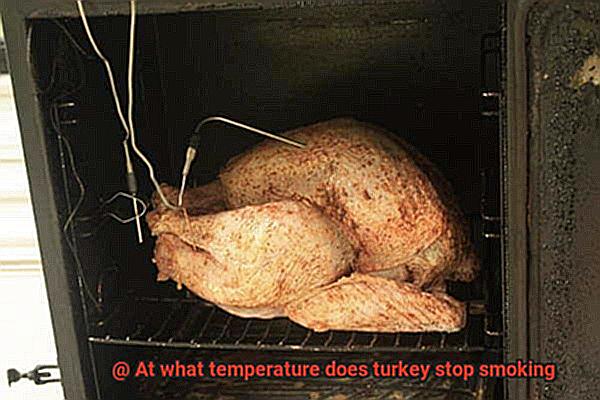
To ensure that the bird is cooked evenly, it’s recommended to check the internal temperature at multiple points. This means checking both the breast and thigh areas of the turkey. The breast tends to cook faster than the thighs, so it’s essential to monitor both areas carefully.
Dual Probes
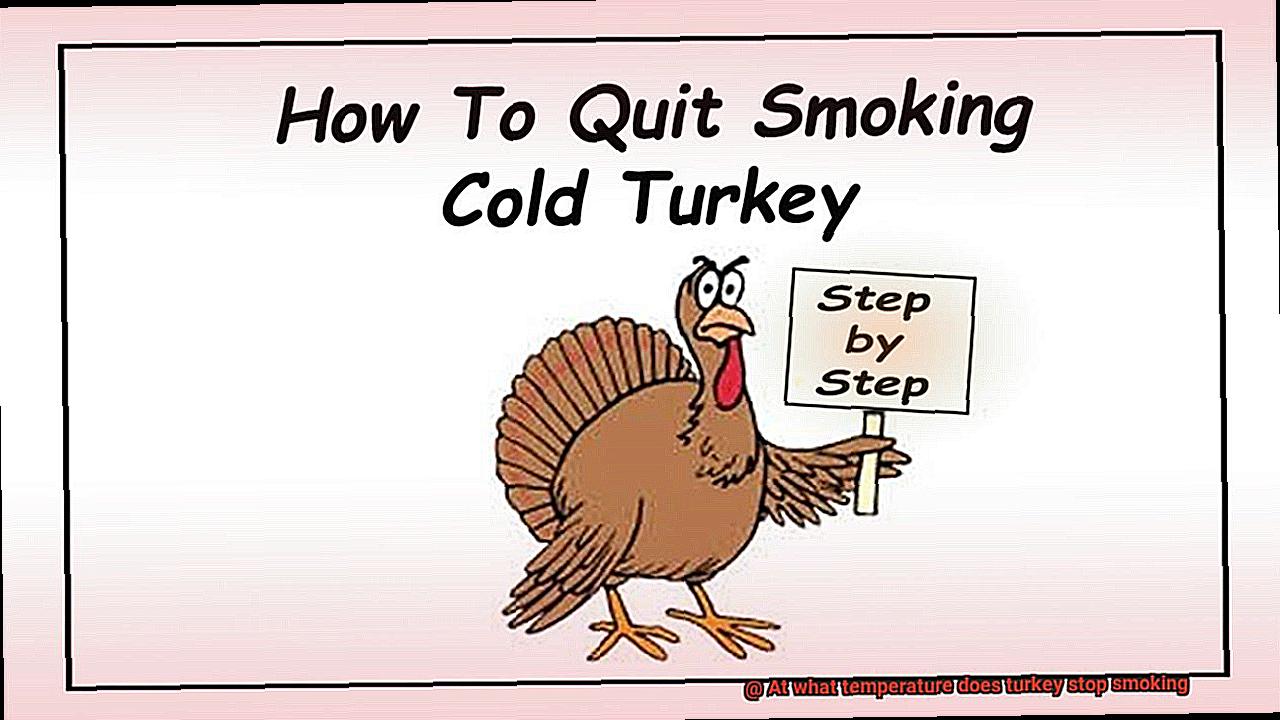
Some smokers come equipped with dual probes that can be inserted into both the smoker and the meat. This allows you to monitor both temperatures simultaneously, giving you a better idea of the cooking process. If your smoker doesn’t have this feature, you can use separate thermometers to monitor each temperature.
Tips for Achieving a Perfectly Smoked Turkey Every Time
Achieving a perfectly smoked turkey requires some tips and techniques that will help you get the best results every time. One of the most important things to consider is the temperature at which you smoke the turkey. The ideal temperature range for smoking turkey is between 225°F and 275°F. Smoking at a lower temperature will not cook the turkey thoroughly, while smoking at higher temperatures will result in a dry and overcooked bird.
To achieve the perfect temperature, using a smoker thermometer to monitor the heat level and ensuring that it remains within the recommended range is crucial. This will help you maintain a consistent temperature throughout the smoking process to ensure that the turkey cooks evenly. An electric smoker or a charcoal smoker with a proper ventilation system can also help you keep the temperature consistent.
Another essential tip for achieving a perfectly smoked turkey is to brine it beforehand. Brining involves soaking the turkey in a solution of salt, water, and other flavoring ingredients such as herbs and spices. This process not only adds flavor but also helps to keep the turkey moist during smoking by allowing it to absorb moisture. Brining should be done for at least 12 hours before smoking for maximum flavor and tenderness.
One of the common mistakes people make when smoking a turkey is not allowing enough time for it to smoke fully. The average smoking time for a 12-pound turkey is approximately 4-5 hours, but this can vary depending on the size of the bird, the temperature of your smoker, and other factors. To ensure that your turkey is fully cooked, use a meat thermometer to check the internal temperature, which should reach 165°F in the thickest part of the bird.
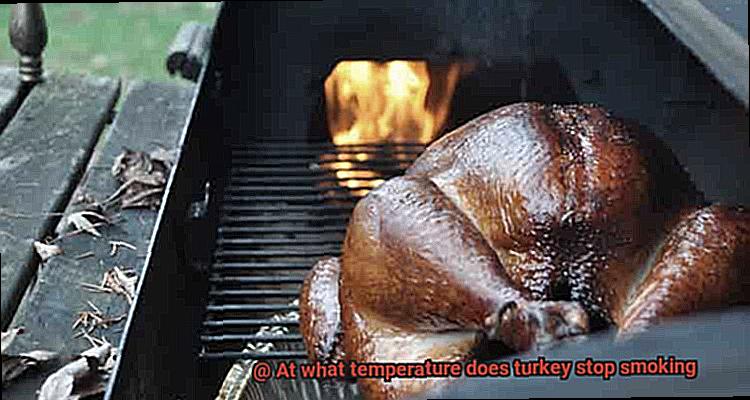
Lastly, knowing when your turkey stops smoking is essential to achieving a perfectly smoked turkey. Even though the turkey has stopped taking on smoke, it still needs to cook until it reaches an internal temperature of 165°F. This will ensure that the turkey is fully cooked and safe to eat. Using a meat thermometer to monitor the internal temperature throughout the smoking process will help you determine when your turkey has stopped smoking.
Common Mistakes to Avoid When Smoking a Turkey
Smoking a turkey can be a mouthwatering experience, but it’s important to steer clear of common mistakes to ensure that your bird is cooked perfectly and safe to eat. As an expert on the subject, I have researched and compiled some tips on what to avoid when smoking your turkey.
Firstly, preparation is key. Ensure that you clean your turkey thoroughly and allow it to brine for at least 12 hours to keep it moist and flavorful. Skipping these steps can lead to uneven cooking and potentially harmful bacteria growth if the internal temperature of the turkey does not reach a safe level.
Maintaining a consistent temperature throughout the smoking process is also crucial. Use a smoker thermometer to keep the temperature within the ideal range of 225-275°F. This will help ensure that your turkey cooks evenly and reaches a safe internal temperature.
Over-smoking is another mistake that can affect the temperature and texture of your turkey. Too much smoke can cause the meat to become dry and tough, so monitor your smoking time and adjust as needed.
Lastly, remember that the internal temperature of your turkey is what determines when it’s safe to stop smoking. You must use a meat thermometer to check that all parts of the bird, including the thickest part of the breast, thigh, and wing joint, have reached at least 165°F before taking it off the smoker. Avoid relying solely on visual cues or timing, as they can be unreliable indicators of doneness.
D8gygc4boZA” >
Conclusion
Smoking a turkey can be quite the undertaking, but with the right tools and techniques, it can result in a succulent and flavorful bird. The secret to smoking a turkey that’s cooked to perfection lies in maintaining optimal temperature control throughout the cooking process. A temperature range of 225°F to 275°F is ideal for smoking turkey, as it allows for thorough cooking while imparting a delicious smoky flavor.
To achieve consistent temperature control, it’s best to use a digital smoker equipped with built-in thermometers. This ensures that heat distribution is even and precise. Additionally, choosing high-quality wood like hickory, applewood, cherry or mesquite can add varying levels of smoky flavor to your turkey.
It’s important to keep in mind that cooked turkey should have an internal temperature of at least 165°F (74°C) in the thickest part of the bird to prevent harmful bacteria growth. To achieve this safely while still maintaining smoky flavor, most experts recommend cooking at low and steady temperatures between 225-250°F.
When monitoring the smoker temperature and internal temperature of the bird, consistency is key. Checking multiple areas of the bird with separate thermometers or dual probes can help ensure even cooking. Avoid common mistakes like over-smoking or relying solely on visual cues or timing to determine doneness.


